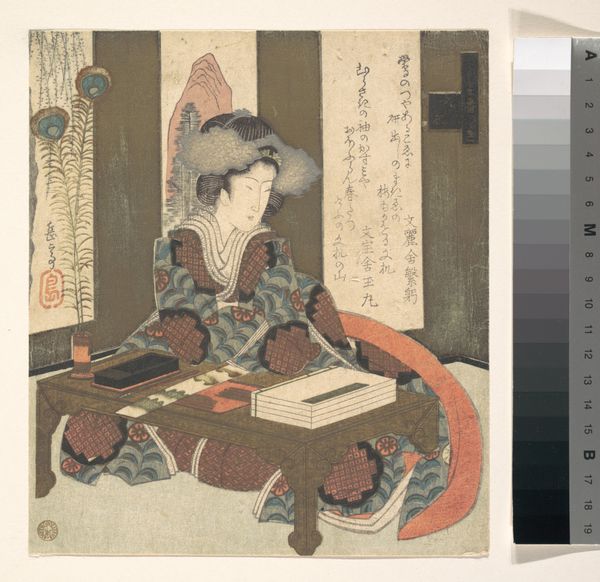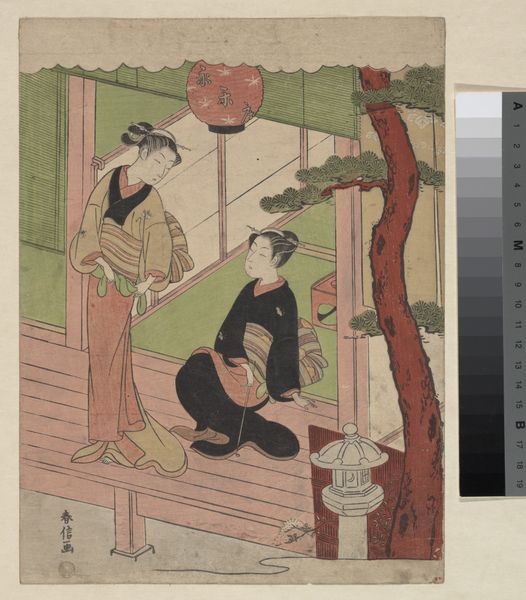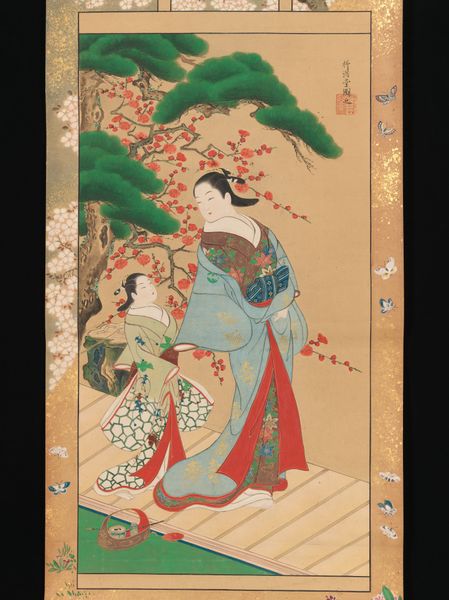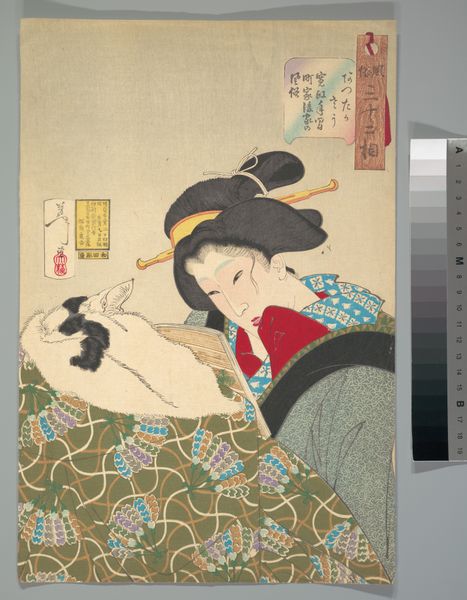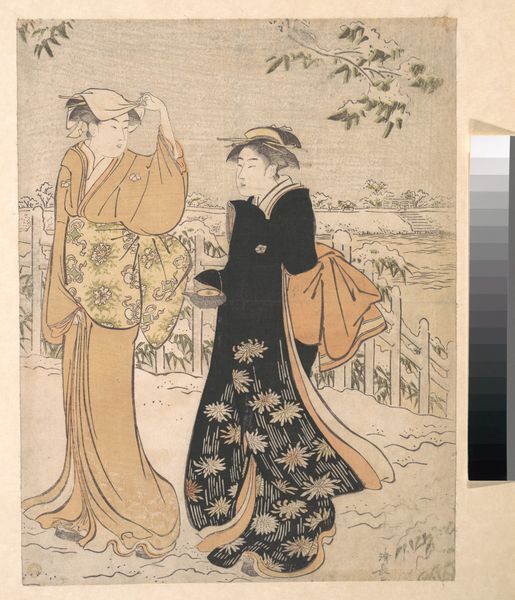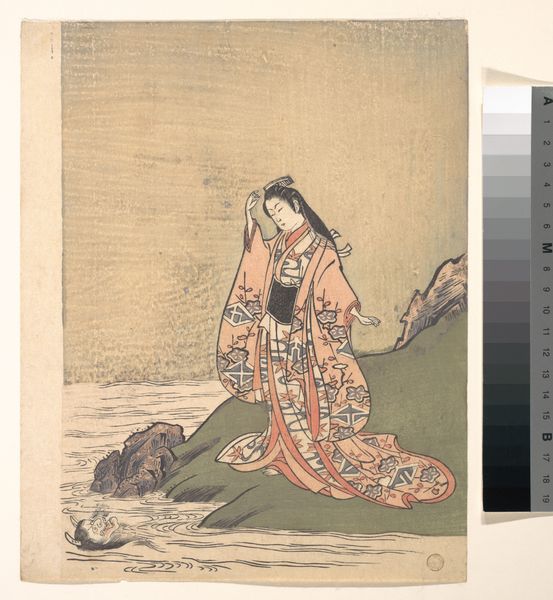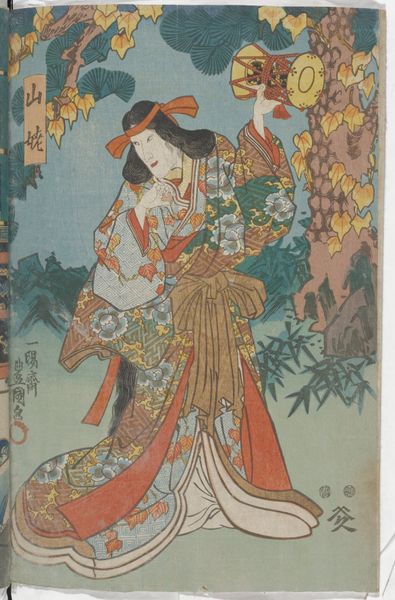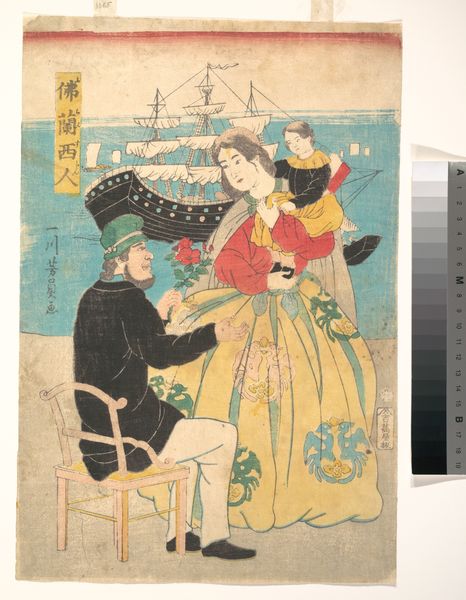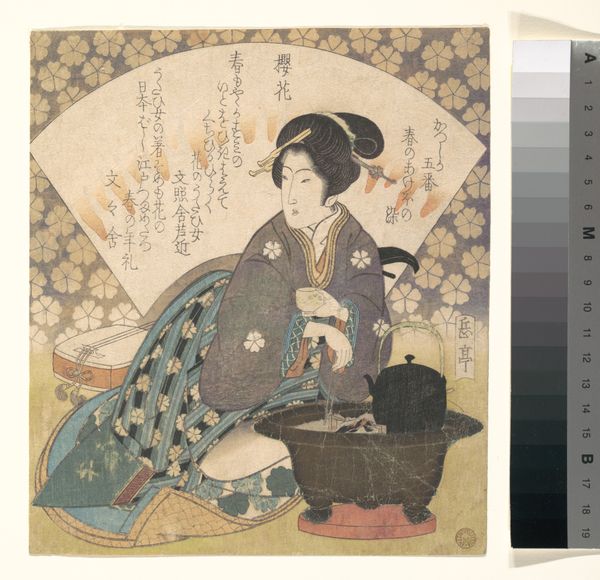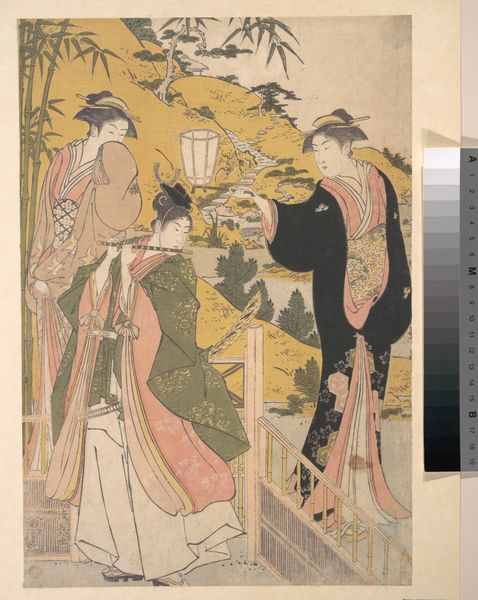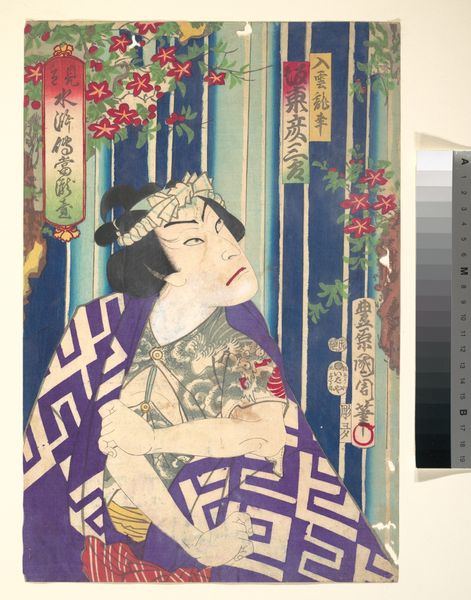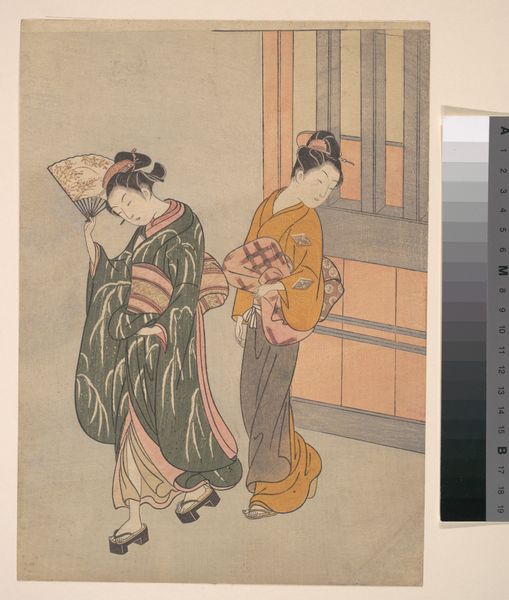
#
portrait
#
animal
# print
#
asian-art
#
landscape
#
flower
#
ukiyo-e
#
figuration
#
naive art
Dimensions: 14 5/8 x 10 in. (37.1 x 25.4 cm)
Copyright: Public Domain
Curator: Allow me to introduce "Genji roku no hana," a captivating woodblock print crafted in 1854 by Utagawa Kunisada. It’s currently held at the Metropolitan Museum of Art. Editor: Immediately striking is the delicate interplay of flat planes and ornate patterns. It feels both decorative and deliberately structured, like a stage set awaiting a performance. Curator: Precisely. Kunisada, a master of ukiyo-e, or "pictures of the floating world," often portrayed fashionable courtesans and scenes from popular literature. The print reflects Edo-period aesthetics through depictions of beauty, fashion, and entertainment. Editor: I'm drawn to the chromatic harmony, particularly the red shades and the placement of complementary colors across the piece. It creates a visually rich but oddly flattened space; it lacks realistic depth. Curator: Note also the semiotic weight of the natural elements. The cherry blossoms are suggestive of the ephemeral nature of beauty, the beauty of springtime but also the transient life that is, well, life in general. Consider that alongside the central figure who herself is an exemplar of high status through clothing and deportment. Editor: There’s something of a societal record here, capturing a snapshot of fashion trends, cultural values, and perhaps even economic strata within Edo society. The artist's interpretation is further embedded by the political environment, too. The Tokugawa shogunate at the time used these prints for propaganda purposes. Curator: The line work, too, adds a great deal of expressive strength. And if we look at the bottom half of the artwork, there's an interesting convergence point with the pet cat acting as a stabilizing foundation that helps us see the rest of the artwork in relationship to each other. Editor: Examining this work more closely highlights how artistic techniques were intrinsically woven into societal norms, making it a study into how social and artistic values can meet, merge, and push away. Curator: Indeed, it allows for a layered and engaging exploration of form and content. Editor: And reminds me of art's role as a cultural mirror, one capable of reflection but always slightly bent with a critical lens.
Comments
No comments
Be the first to comment and join the conversation on the ultimate creative platform.
